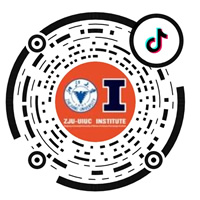Recently, the internationally renowned multidisciplinary journal 'Nature Communications' published online an article titled 'Correlating metasurface spectra with a generation-elimination framework,' reporting the latest research findings from Assist Prof. Qian Chao and his team at the Zhejiang University-University of Illinois Urbana-Champaign Institute (ZJUI). The research team proposed a concept of the third class of metasurface design to achieve the correlation of complex spectra.
▲ Figure 1 the correlation of metasurface spectra response
Remarkable progress has been made in recent years in the development of intelligent metamaterials that involve deep learning to imitate the design and working mode of metamaterials. Compared with traditional methods including numerical simulation and physical model, the intelligent design of metamaterial gets rid of the physical intuitive limitations and greatly saved the repeated manual labor and expensive computing resources. At present, intelligent metasurface design can be generally divided into two classes: 1. forward design, quickly predict the optical response in batches though the trained neural network model according to specific metasurface structure; 2. reverse design, in contrast to forward design, meaning the direct generation of the metasurface candidates for the user-defined optical response. To date, we have witnessed both forward and backward designs have been well studied with different network structures and universally applied in waveguides, gratings, photonic crystals and metamaterials and other physical scenarios.
However, there is another class of metasurface design that has been ignored, i.e., the inference of optical response from other correlated optical response. (e.g., correlating high-frequency responses with low-frequency responses). To distinguish it from forward and inverse designs, we term it the third-class metasurface design. It can extract the desired images, spectra, and material features from other easily accessible information with the advantages of low cost and easy measurement, and can be used to recover high-frequency information in the fields of communication, Raman spectroscopy, protein spectral analysis, etc. However, the realization of this spectral correlation is difficult and cannot be easily duplicated from conventional forward and inverse designs due to the complex many-to-many mapping. Currently existing designs intrinsically solve one-to-one or one-to-many mapping issues, eliding the nature of physical interpretability and the solution diversity.
To tackle this challenge, Assist Prof. Qian Chao and his team proposed a generation-elimination network based on the conditional variational autoencoder (CVAE). From a macro perspective (Fig. 1), the generation-network takes low-frequency (f1-f2) responses as inputs to independently generate a large number of high-frequency candidate outputs (f2-f3). The candidate solutions will be further screened by the subsequent elimination network and a bifurcating tree. The detailed layer-level information is referred in Fig. 2. The overall network architecture consists of two cascaded sub-networks, namely, generative network and elimination network, each of which is composed of an encoder, the latent space, and a decoder (Fig. 2a). For a given input (low-frequency), the generation network can generate various candidates (high-frequency), and the elimination network will reversely map each candidate into the original space (Fig. 2b). The optimal candidate is picked out by calculating the Euclidean distance between the input and secondary candidates.
▲ Figure 2 Schematic diagram of the generation-elimination network
To validate the effectiveness and interpretability of the generation-elimination network in extracting distributed data, the research team visualized the two-dimensional Gaussian variable distribution in the latent space of the generation network (latent space 1 in Figure 2a). Each point in the space represents a combination of encoded low-frequency and high-frequency inputs. By compressing the low-frequency and high-frequency data into one-dimensional variables (e1 and e2) using an autoencoder (AE), the obtained two types of feature variables were used to color the points in the latent space separately. In Figure 3a, it can be observed that each specific color-coded point (e.g., the purple color representing e1≈0.4) approximates a standard normal distribution after extraction. This demonstrates the rationality of sampling latent variables from a standard normal distribution during the inference stage when any low-frequency is used as input, and all of them can be decoded into high-frequency candidate solutions. Furthermore, in Figure 3b, the points colored based on high-frequency features (e2) are clearly divided into different clusters, indicating that the subnetwork based on CVAE can autonomously learn and distinguish high-frequency spectral curves with different features.
▲ Figure 3 the latent space visualization after feature extraction
To better explain the working principle of generation-elimination network, the research group use a tree diagram in Fig. 4a to illustrate the generation-elimination mechanism. Several father nodes discovered by the generation "magnifier" are linked to the input root node. Then, each father node gives birth to some secondary candidates termed as leaf nodes by using the elimination network. The father node whose leaf node has the minimum distance from the root node is chosen as the final output The Fig. 4b shown the result of the generate–elimination network. We could find the final solution is closely matched with the ground truth in all cases.
To quantify the outstanding performance of our framework, the research team quantitatively define three criteria as follow. (1) MSE: the mean square error between the predicted spectra and ground truth spectra. (2) Average accuracy ( , where
is defined as the average relative error between the predicted spectra and ground truth spectra. (3) Similarity: the correlation coefficient between two vectors/curves. Fig. 4c displays the summary statistics of three quantitative criteria on the elliptical dataset when trained with the baseline FCN model and our framework, separately. For the MSE loss, the baseline FCN is nearly one order of magnitude larger than the proposed framework, Besides, the average accuracy and the similarity give more intuitive comparisons.
▲ Figure 4 Tree graph interpretation of generation-elimination network and visualization and quantification results
The first author of this paper is Chen Jieting, 21’ Computer Engineering undergraduate of ZJUI, ZJUI Assist Prof. Qian Chao and Prof. Chen Hongsheng from the College of Information Science & Electronic Engineering are the co-corresponding authors. The work was supported by the National Natural Science Foundation of China and other projects.
Article Link:https://www.nature.com/articles/s41467-023-40619-w
Author Profile
Chen Jieting is currently a master's student at the College of Information Science & Electronic Engineering at Zhejiang University and graduated from ZJUI in the class of 2021 with a bachelor's degree in Electronic and Computer Engineering. In 2019, he spent half a year studying abroad at the University of Illinois at Urbana-Champaign, USA, and won several awards, including the first prize in the 12th Zhejiang Province 'Challenge Cup·Ningbo Jiangbei' College Student Entrepreneurship Competition and the ZJUI Dean's List scholarship. Currently, he is dedicated to scientific research that combines deep learning with electromagnetic applications.







